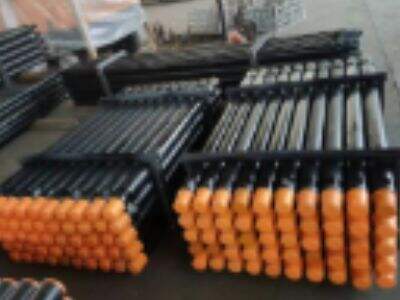When drilling in the soil or softer earth, you’ll often be faced with a pretty messy job, especially when drill with the DTH (Down-the-Hole) method. Drill bits can jump around or veer off track, too, making the work harder and take longer to complete. To help improve the ease and accuracy of drilling, there are a couple of things you can do to minimise the bounce and deviation of the bit during DTH drilling.
The underlying causes of bit bounce in DTH drilling
One of the primary contributing factors to the bouncing of the bit during drilling is due to uneven ground. And when the ground is too hard or soft, the bit can have a hard time remaining stable and bounce around. Bit bounce Reason for bit bounce #2: a blunt or worn bit. A worn or dull bit cannot get a good grip on the ground and can bounce.
Through the use of correct appropriate drilling methods toward reducing bit deviation
To reduce the extent of bit deviation in DTH drilling tools, the correct drilling procedure is a priority. That is to ensure that the drill bit is positioned correctly at the angle it is supposed to be at when going through. If the bit is angled incorrectly, you may end up with a hole that is not centered, or with wander. I also use appropriate force when driving. Too hard can make the bit bounce; too softly can make it wander.
Selecting the proper bit for performance and accuracy
Selecting the correct DTH bit is essential for you to achieve the optimal performance from your drill rig. There are various types of drill bits that are designed for different types of ground conditions. For instance, when you are drilling in hard rock, you will require a different kind of bit from when you are drilling in soft soil. The appropriate bit selection will ultimately result in smooth drill work and balanced hole to hole drilling.
Ensuring stable work for a smooth drilling.
During DTH drilling, uniform air pressure is key to a successful drilling operation. Some air pressure is also utilized in order to assist in the removal of the rock cuttings from the hole, and to cool the drill bit. When the drilling air pressure is under normal consumption, the drill bit may fail to grasp the ground through the whole bit touching the ground software, so that the bit rebound is generated. However, excessive high air pressure can likewise veer the bit off course. The air pressure should be continuous throughout the duration of the drill to maintain good drilling.

